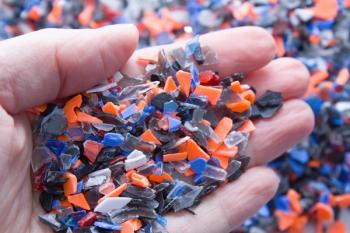
New TDLAS-Based System Made for Characterizing Gaseous Species
German and Canadian scientists recently created a new system for characterizing gaseous species distribution during combustion.
Scientists from the Technical University of Darmstadt in Darmstadt, Germany and the University of Waterloo in Waterloo, Canada created a new system for characterizing gaseous species distribution during combustion. Their findings were later published in Scientific Reports (1).
Combustion appliances are devices that burn fuels for heating, cooking, or decorative purposes (2). These include space heaters, ranges, ovens, stoves, furnaces, fireplaces, water heaters, and clothes dryers. These appliances, which are typically fueled by substances like natural or liquefied petroleum (LP) gas, fuel oil, kerosene, wood, or coal, are typically safe. However, combustion pollutants, which are gases or particles that result from burning materials, such as carbon monoxide, nitrogen dioxide, or particulates, can damage one’s health while also posing an environmental hazard. Low-emission and high-efficiency combustion devices have been created in the past, but the next generation of these devices will rely on precise information on gas species and gas temperature distribution within the process. This effort requires measurement methods that offer high spatial resolution while requiring minimal optical access. Established measurement techniques, such as tomographic absorption spectroscopy and planar laser-induced fluorescence, while being suitable for laboratory studies, require optical access at levels often unavailable for real-world devices. In contrast, tunable diode laser absorption spectroscopy (TDLAS) is thought to demand much less optical access while providing only path-integrated information, which restricts comprehensive analysis along the line-of-sight (LOS).
To address this, the scientists created an approach that combines time-of-flight light detection and ranging (LiDAR) with TDLAS to scan individual gas molecular transition lines. Instead of relying on hyperspectral sources, the use of inexpensive tunable diode lasers allows for a slowly tunable source, while an electro-optical modulator (EOM) can introduce the necessary steep intensity gradients for time-of-flight (ToF) ranging. Gas phase molecular absorption features are scanned by sequentially and repeatedly recording time resolved pulse reflection signals at different wavelengths.
Following the formation of this system, the scientists established the theoretical foundations of this technique and explore its potential using numerical simulations. Afterwards, a proof-of-concept measurement, showing how this technique can be used for future deployment in more application-like environments. According to the scientists, this method is most applicable in situations where scattering objects are distributed along the beam path, such as solid fuel combustion, or when dealing with multiple gas volumes separated by weakly reflecting windows. After performing various experiments, the scientists concluded that their method, compared to established measurement techniques, is advantaged by only requiring minimal optical access to the investigated process and using inexpensive tunable diode laser sources to resolve the spectra.
“A numerical study revealed that practical measurements in particle-laden flows are possible provided that the signal-to-noise ratio of the detected signal is sufficiently large,” wrote the scientists. “However, various influences on SNR like beam-steering, stochastic scattering by moving particles, and realistic losses at process windows need to be evaluated in a future study.”
There is potential in merging TDLAS with optical ranging to infer local gas phase properties in particle-laden flows and lay the theoretical foundation for advanced measurements. Future research efforts will focus on conducting an experimental proof-of-concept for particle-laden flow and optimizing the experimental setup, so that measurements can be performed in technically relevant scenarios.
References
(1) Hansemann, C.; Bonarens, M.; Emmert, J. et al. Towards a Spatially Resolved, Single-Ended TDLAS System for Characterizing the Distribution of Gaseous Species. Sci. Rep. 2024, 14, 11708. DOI:
(2) Combustion Appliances. State of New Jersey 2009.
Newsletter
Get essential updates on the latest spectroscopy technologies, regulatory standards, and best practices—subscribe today to Spectroscopy.




